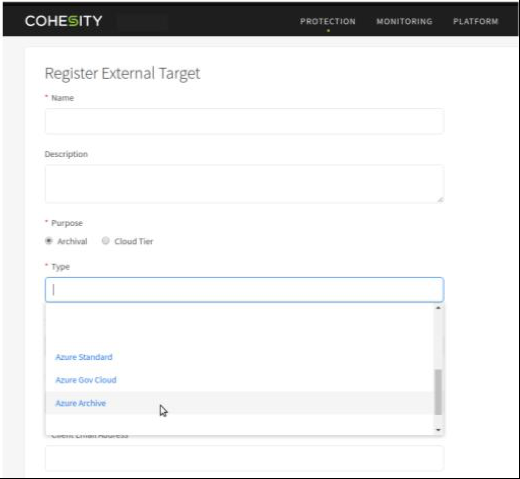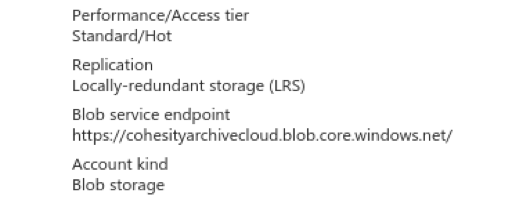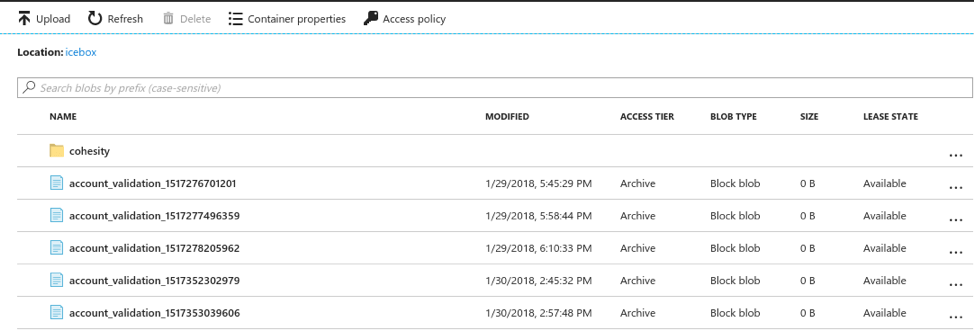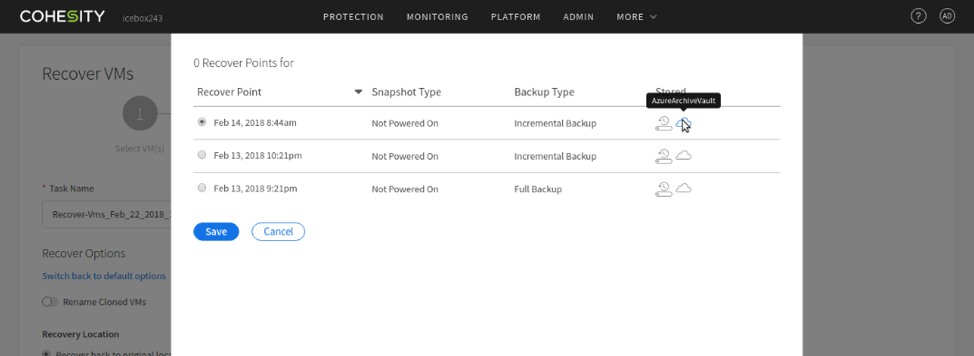Public cloud expansion will continue to see double-digit growth over the next five years, according to IDC. One of the most common use cases is backup and long-term retention of data to the public cloud. It just makes sense. Instead of using tape, which is not searchable or easily retrievable, why not use the public cloud where the data is much more accessible?
However, the volume of data stored in the cloud is growing at an immense pace, and not all of it can be treated the same way. Based on frequency of access, and tolerated access time, it is possible to save costs by leveraging a different storage tier. For example, if a VM (Virtual Machine) needs to be backed up, and the user knows it will not be accessed for a long period of time, storing it in a lower-cost tier would save significant costs.
To increase the value of long-term retention, Cohesity DataPlatform now provides users the option to use Microsoft Azure Archive Blob Storage. This low-cost storage option is ideal for long-term retention of data that is unlikely to be accessed in the near future. The data can also be seamlessly recovered from Azure Archive Blob Storage if and when the need arises.
Cohesity is working with Microsoft to make the management of data and its long-term archive and retention that much easier.
We are excited to further our integration with Microsoft Azure and include Azure Archive as an option for customers when it comes to long-term data retention. Our mutual customers will benefit from the cost savings of being able to move data to the Archive tier.
– Vineet Abraham, VP of Engineering, Cohesity.
We are pleased to see Cohesity extend their integration with Microsoft Azure Storage to now include Azure Archive Blob Storage. This offers our mutual customers more choice in determining their storage tiering strategy and they benefit from the cost-effective, durable and highly available secure cloud storage for their rarely accessed data.
– Tad Brockway, General Manager, Azure Storage, Microsoft Corp.
How to Configure Cohesity and Azure Archive Blob Storage for Long Term Retention
Cohesity DataPlatform delivers modern data protection that is designed to take advantage of the public cloud. Through our Azure integration, Cohesity offers the option to choose Azure Archive Blob Storage as the destination for a backup job. While registering an External Target for the backup, the option Azure Archive Blob Storage should be chosen.
Fig 1: Register Azure Archive Blob Storage as external target to Cohesity
The storage account being used must be ‘Blob Storage’ with replication set to locally-redundant storage (LRS).
Fig 2: Credentials of Azure storage account
Once a backup job to Azure Archive Blob Storage is initiated with the correct credentials, objects belonging to this job will be uploaded to the specified container. Once the upload is complete, the Azure Set Blob Tier API is used to set the access tier of the uploaded objects to ‘Archive’. This step is instantaneous and requires no user intervention.
Fig 3: Set Blob Tier API is used to set the access tier of the uploaded objects to ‘Azure Archive Blob Storage’
Objects stored in archive storage are offline and cannot be accessed while they are in that tier. If a business event occurs where this data needs to be retrieved, they need to be brought to Microsoft Hot/Cool tiers first. This process is called rehydration and can take up to 15 hours according to Microsoft.
To restore a VM stored on Azure Archive Blob Storage, the archive cloud target is chosen while initiating the restore job.
Fig 4: Cohesity provides search mechanism to recover VMs
The Set Blob Tier API is used again to set the access tier to Hot or Cool. During rehydration, the Archive Status property is checked to confirm if the tier has changed. The status reads “rehydrate-pending-to-hot” or “rehydrate-pending-to-cool” depending on the destination tier. Once the object’s Access Tier property has changed to “Hot” or “Cool”, it can be accessed and restore is completed.
In this blog post you’ve seen how to get Cohesity DataPlatform up and running with the Azure Archive Storage Tier. More information on other Cohesity and Azure cloud use cases can be obtained on Cohesity’s Azure page.



















